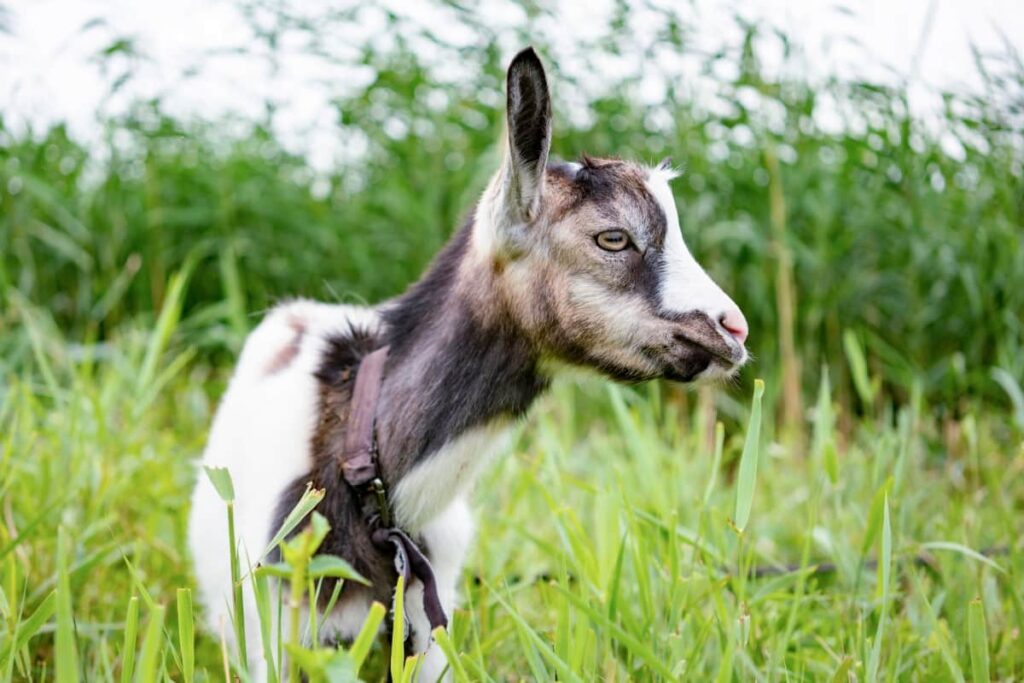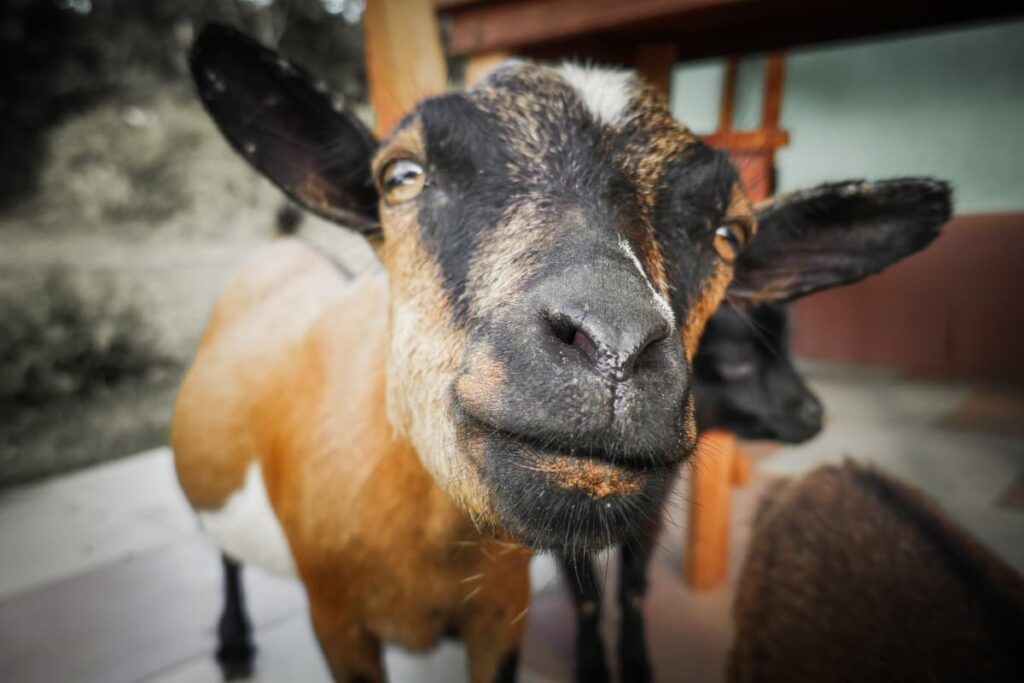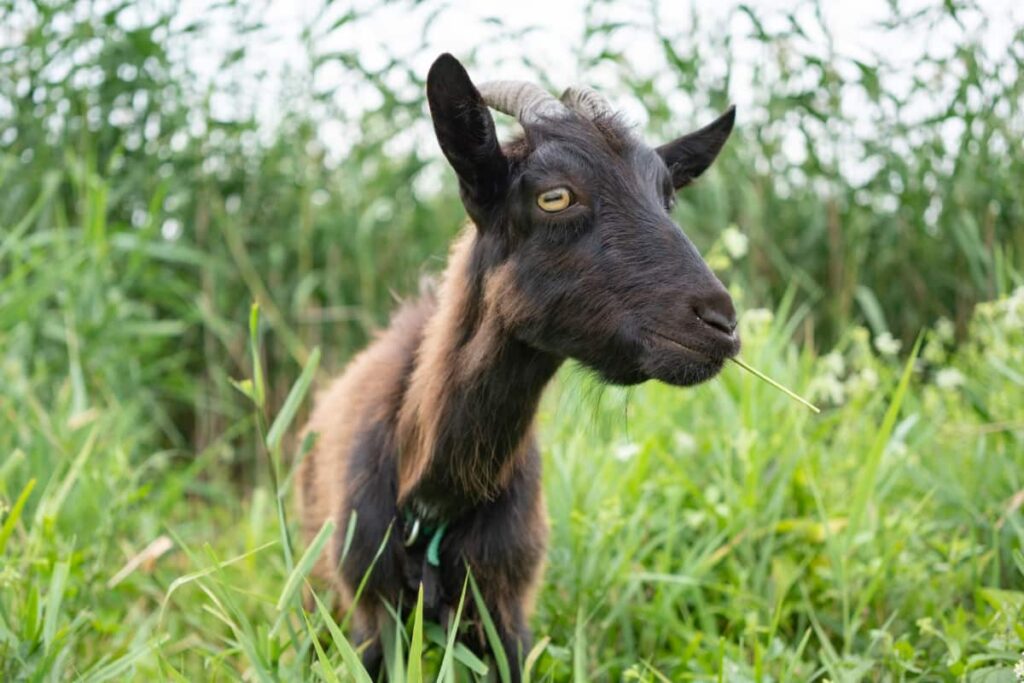Kinder goats are known for their dual-purpose capabilities, making them valuable assets on small farms or homesteads. They not only provide high-quality milk but also produce delicious meat. These hardy and adaptable animals can play a crucial role in sustainable farming practices.

Guide to Kinder Goats
Overview of Kinder Goats
History and Origin
The American breed originated at Zederkamm Farm in Snohomish, Washington, United States. It is a relatively newer breed compared to others but has gained popularity for its versatility and gentle temperament. Kinder goats are a cross between Pygmy and Nubian breeds, resulting in their unique characteristics.
Breed Characteristics
Kinder goats are known for their friendly and gentle nature, making them excellent companions on the farm. They are a dual-purpose breed, prized for both their milk and meat production capabilities. One of the defining characteristics of Kinder goats is their high fertility rates, with does often kidding multiple times a year. This makes them a valuable asset when it comes to breeding programs or increasing herd size.
Benefits of Raising Kinder Goats
Raising Kinder goats comes with a plethora of benefits that make them a valuable addition to any farm. These hardy and adaptable animals are known for their friendly demeanor, making them ideal companions for both adults and children alike. The major benefit of raising Kinder goats is their dual-purpose nature, providing high-quality milk and lean meat. Their low maintenance requirements make them cost-effective to raise, requiring less feed and space than larger breeds.
Lifespan
Kinder goats have a lifespan similar to other goat breeds, typically ranging from 10 to 12 years. Proper care and nutrition play a significant role in extending their lifespan.
Housing and Shelter
Shelter Design Considerations
The shelter should provide adequate protection from the elements, such as rain and extreme temperatures. This can be achieved by proper insulation and ventilation. Additionally, the shelter should have enough space to accommodate all your goats comfortably. Each goat should have around 10-15 square feet of space inside the shelter.
Climate Adaptations
Kinder goats thrive in various climates due to their adaptable nature. Their thick double coat provides insulation against cold winters and hot summers. In colder regions, they grow a heavier undercoat to keep warm while shedding it in warmer weather to regulate body temperature. These goats are known for being hardy and resilient, making them suitable for diverse environmental conditions.
Feeding and Nutrition
Essential Nutrients
When it comes to feeding your Kinder goats, providing essential nutrients is key to their health and well-being. A good diet rich in fiber, vitamins, minerals, and protein is crucial for their growth and productivity. Make sure to offer a variety of high-quality hay, fresh grass, grains, and mineral supplements to meet their nutritional needs. It’s important to have clean water available at all times as well.
Feeding Schedule
Establishing a consistent feeding schedule will help maintain their digestive health and prevent issues like bloating or indigestion. Monitor their weight to ensure they are getting the right amount of food for optimal growth. Consulting with a veterinarian can help you make a customized feeding plan based on Kinder goats’ specific requirements. Remember, healthy goats are happy goats.
In case you missed it: Ultimate Guide to Payoya Goat: Raising, Breeding, Milk Yield, Diet and Care

Health and Wellness
Routine Veterinary Care
Health and wellness are crucial aspects of raising Kinder goats. Routine veterinary check-up plays a significant role in ensuring the overall herd. Regular check-ups, vaccinations, and deworming are essential to prevent illnesses and maintain good health in your goats. Monitoring for signs of illness or distress is important to address issues promptly before they escalate.
Common Health Issues
One common health issue that Kinder goats may face is parasitic infections. These can include internal parasites like worms and external parasites like mites. Regular deworming and proper hygiene practices can help prevent these issues. Another potential health concern is foot rot, a bacterial infection that affects the goat hooves.
Maintaining clean and dry living conditions can help reduce the risk of this painful condition. Respiratory infections are another challenge that Kinder goats may encounter, especially in damp or crowded environments. Good ventilation and isolation of sick animals can aid in preventing the spread of respiratory illnesses.
Preventative Measures
By implementing proactive strategies, you can reduce the risk of common health issues and maintain a thriving goat population. Regularly monitoring your goats for signs of illness or discomfort is key to early detection and treatment. Maintaining a hygienic living environment for your goats is essential in preventing diseases and infections.
Breeding and Genetics
Understanding Genetics
Understanding the genetics of Kinder goats is crucial for successful breeding practices. Genetics determine the characteristics and traits passed down from parents to offspring. By studying the genetic makeup of your herd, you can make informed decisions when selecting breeding pairs. Breeders should consider factors such as color, size, milk production, and overall health when planning matings.
Breeding Practices
Breeding Kinder goats requires careful attention to ensure the health of both the pregnant does and their kids. Genetic diversity is essential to maintain a healthy population of Kinder goats. Properly caring for pregnant does and kids not only promotes healthy offspring but also strengthens your breeding program for future generations of Kinder goats.
Caring for Pregnant Does and Kids
When a doe is pregnant, it’s essential to provide her with proper nutrition and regular veterinary check-ups to monitor her progress. As the due date approaches, creating a comfortable and secure birthing environment is crucial for a successful delivery. Ensuring that the kidding area is clean, quiet, and free from stressors will help the mother goat feel safe and relaxed during labor.
After birth, it’s important to closely monitor the newborn kids to ensure they are nursing properly and receiving colostrum. Providing warmth, shelter, and bonding time with their mother is key for their overall development.
Milk Production
Maximizing Milk Yield
Milk yield maximization in Kinder goats is essential for dairy farmers looking to boost their production. Key factors in maximizing milk output are providing a good diet rich in nutrients and maintaining a stress-free environment.
Handling and Storing Milk
Make sure your milking equipment and storage containers are thoroughly cleaned before each use to prevent contamination. After milking, strain the milk through a clean filter to remove any impurities or debris. This will help ensure that milk stays fresh for longer periods. When storing Kinder goat milk, always refrigerate it promptly at temperatures below 4°C. Proper refrigeration helps maintain the quality and freshness of the milk.
Meat Production
Growth and Weight Gain
Providing a balanced diet rich in nutrients, along with adequate space for exercise, is crucial in promoting healthy development. Kinder goats are known for their efficient conversion of feed into muscle mass, making them an excellent choice for meat production. Regular health check-ups and preventative measures against common illnesses play a significant role in maintaining the well-being of Kinder goats destined for meat production.
Market Preparation
Market preparation involves packaging the meat appropriately for sale. Whether selling directly to consumers or through local markets, presentation is key in attracting buyers. Knowing your target market and their preferences can help tailor your marketing strategy toward a successful sale.
Fleece and Fiber
Characteristics of Kinder Goat Fiber
The characteristics of Kinder goat fiber make it highly sought after in the textile industry for its quality and versatility. Kinder goat fiber is prized for its natural insulating properties, making it ideal for creating warm and cozy clothing items like sweaters, scarves, and blankets. Additionally, their fibers have a beautiful luster that adds beauty to any garment or textile product.
Shearing Techniques
Shearing techniques play a crucial role in maintaining the quality of Kinder goat fiber. Proper shearing helps prevent matting or tangling of the fibers, ensuring they remain soft and manageable for processing into yarn or fabric. Utilizing proper techniques ensures quality fleece for various projects. When shearing, it’s important to handle the goats gently and use sharp blades to avoid causing them any discomfort. Properly removing the fleece helps maintain its integrity and value.
Utilizing and Selling Fiber
After shearing, the fiber can be utilized in different ways, such as spinning yarn, felting, or crafting textiles. Selling Kinder goat fiber can be a profitable venture for farmers looking to diversify their products. Building relationships with local artisans or selling online can help reach a wider market interested in sustainable and ethically sourced fibers.
In case you missed it: Ultimate Guide to Laoshan Goat: Characteristics, Origin, Price, Size, Lifespan, Raising and Care

Conclusion
Kinder goats are known for their manageable size and easy-going temperament, making them ideal for beginners and experienced farmers alike. Raising Kinder goats can be a rewarding experience, whether for milk production, meat, or simply as lovable pets. With proper care, these goats can thrive in various climates and environments.
Note: The images presented in this post are intended solely for representation purposes. The images are meant to serve as visual aids and should not be relied upon as accurate representations of their real-life counterparts.
- Types of Grass Growing for Goat Farm
- How to Train Goats for Milking: A Beginners Guide
- Goat Milking Practices and Equipment: A Beginner’s Guide
- Goat Farming for Fiber: Producing Mohair and Cashmere
- Maximizing Goat Milk Production: Tips for Dairy Goat Farmers
- Goat Farming as a Family Business: Strategies for Success
- Profitable Kenya Goat Breeds for Commercial Dairy and Meat Business
- Unlock the Secrets of Oberhasli Goat: Discover Raising and Management Practices
- Ultimate Guide to Myotonic Goats: Explore Profile to Raising